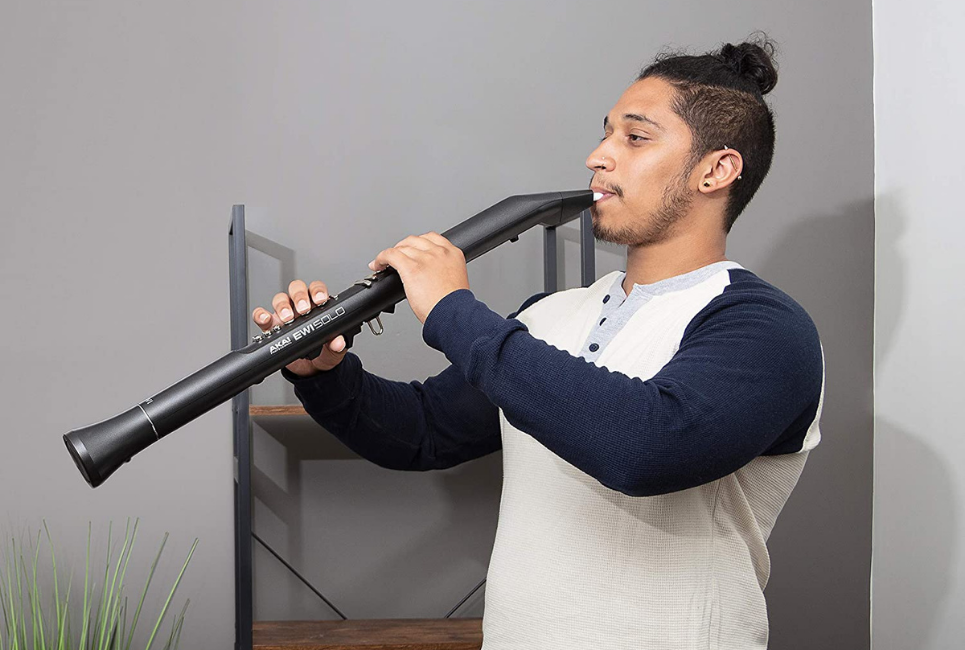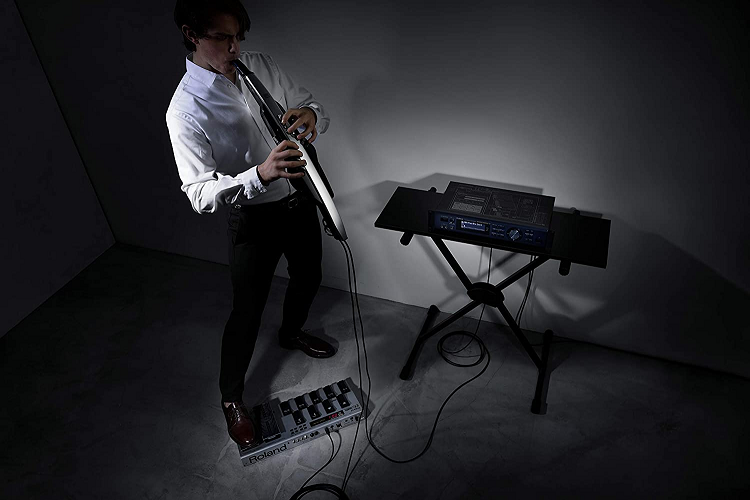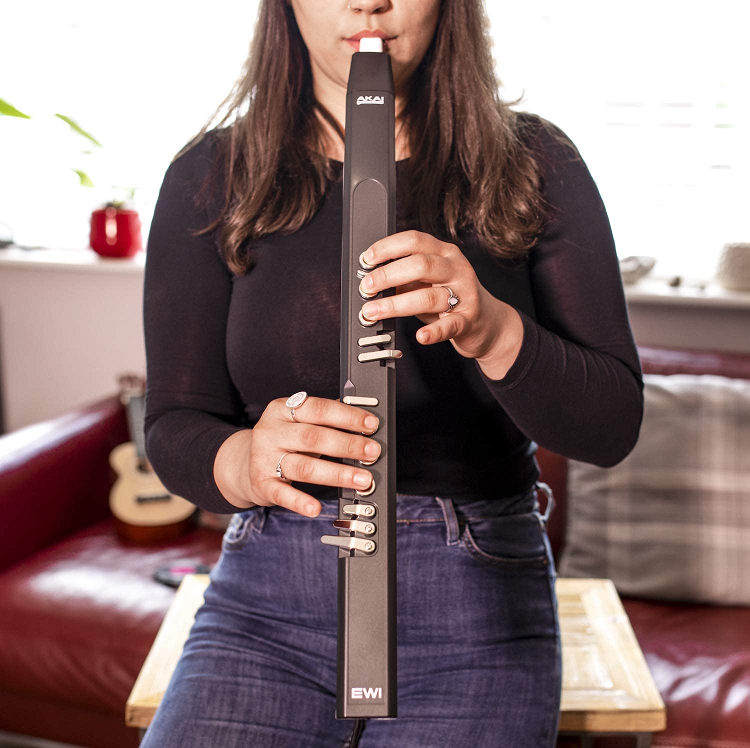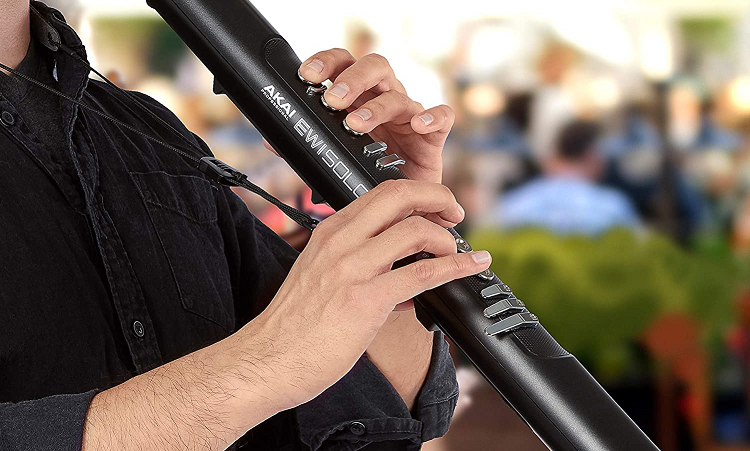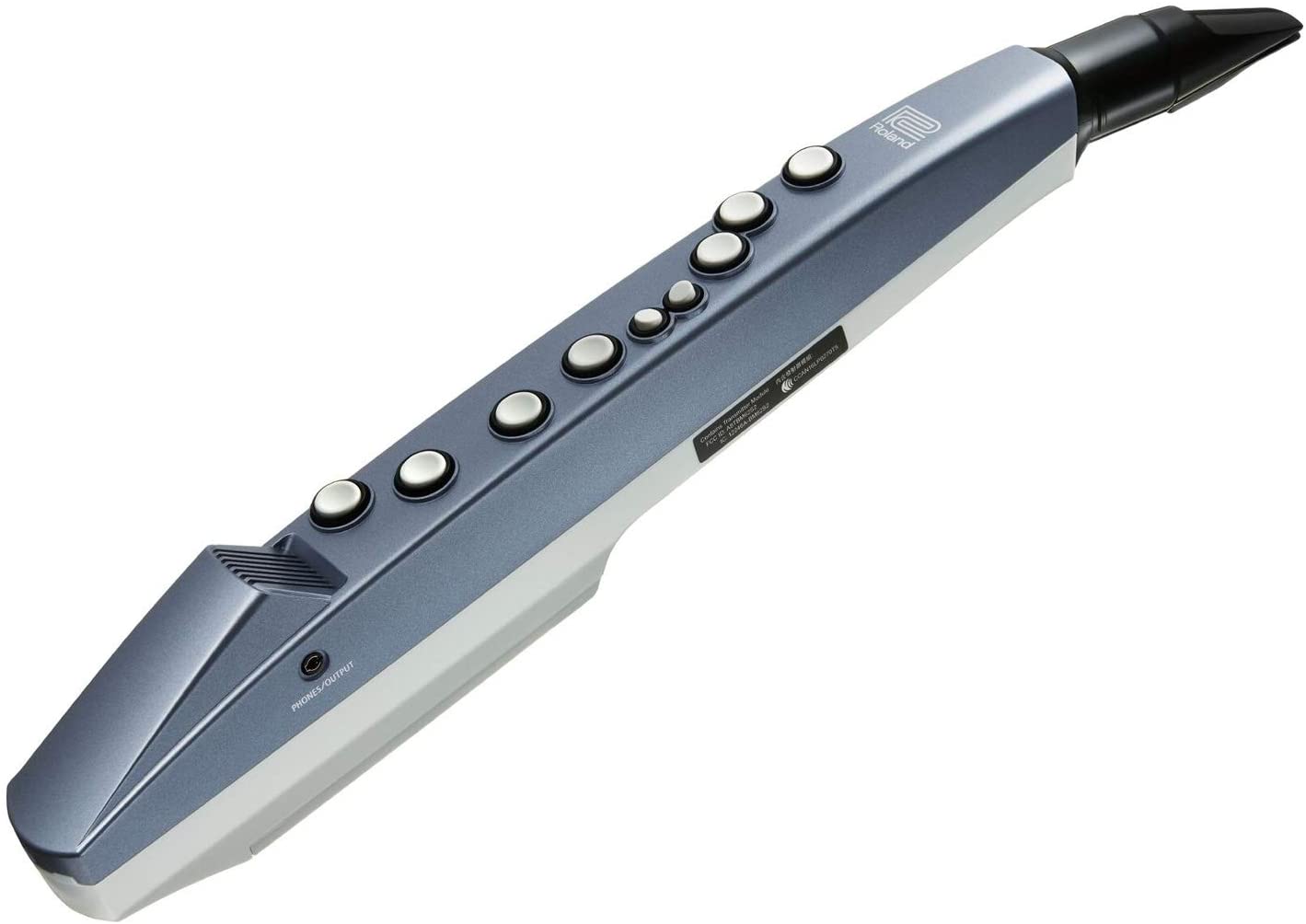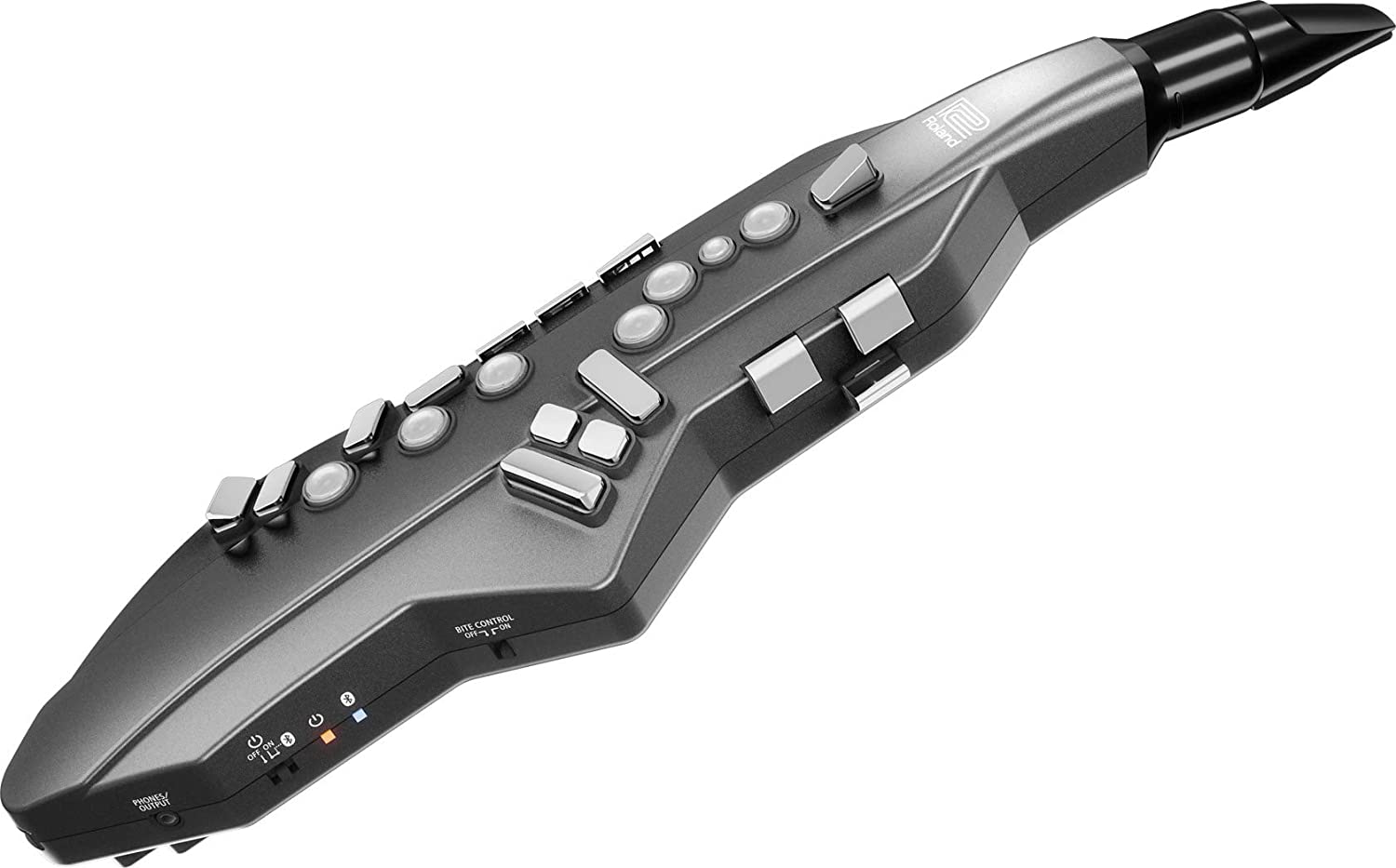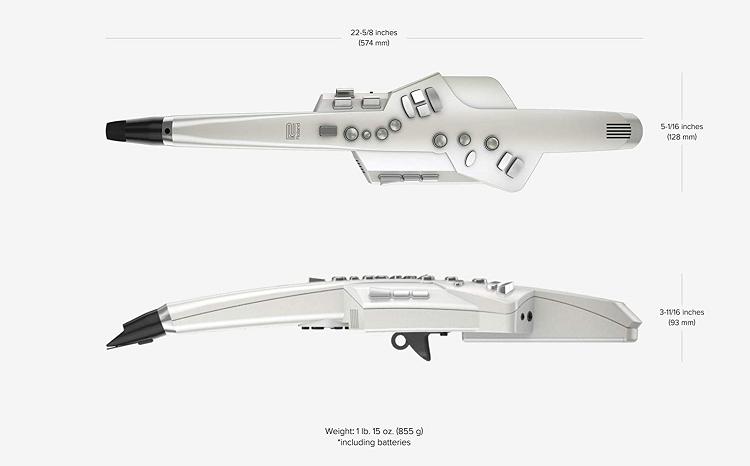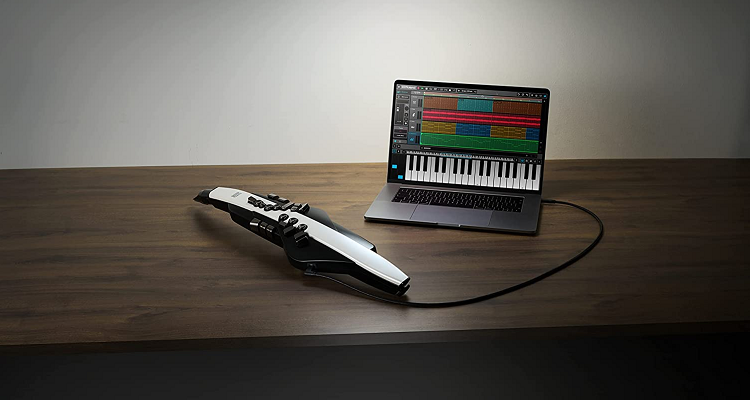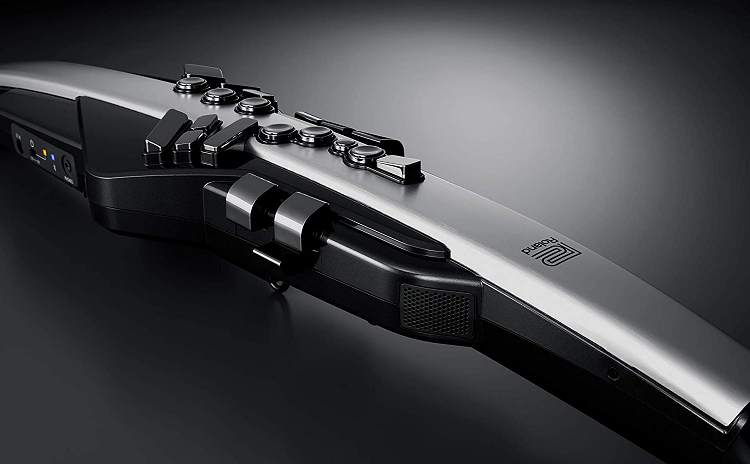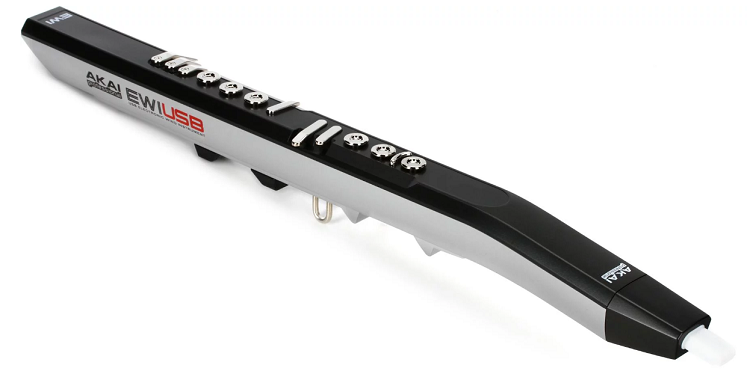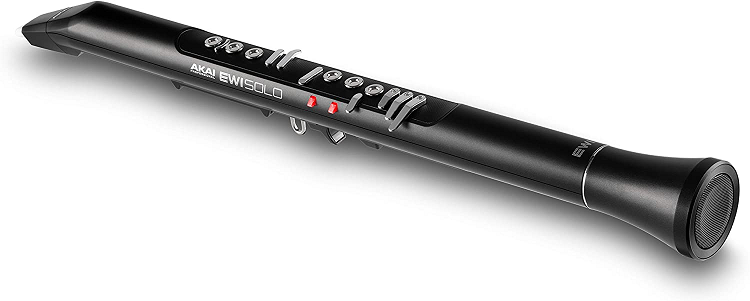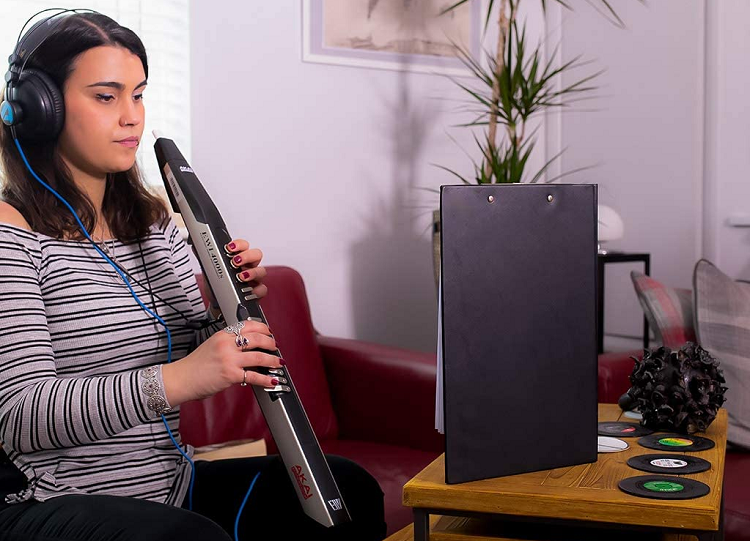- How to Find the Best Sopranino Saxophone - May 31, 2022
- How to Find the Best Contrabass Saxophone - May 30, 2022
- Trumpet Range Guide: Understanding The Entire Trumpet Range - May 19, 2022
Do your roommates or relatives tell you to stop practicing the saxophone? Before you fight back or look for another practice space, learn how to find the best electric saxophone.
Then, you can practice at any time, but you can use headphones. You won’t have to worry about annoying the people you live with, but you’ll be able to improve your playing.
Bottom Line Up Front: Electric saxophones come at different prices and with a variety of features. The Roland AE-01 is a basic model that’s great for beginners, but other models are better for serious players.
How to Find the Best Electric Saxophone
With all of the different types of saxophones, it can be hard to choose just one. Luckily, the electric saxophone allows you to cover the entire range of the four common saxes, from soprano to bari.
If you want to expand your repertoire but can’t afford a professional standard saxophone, electric models are great. But you should know what to look for since the factors are quite different.
Here are some of my best tips for finding the right electric saxophone for you.
Know Your Budget
Some electric saxophones cost double, triple, or even quadruple the amount that other models cost. You don’t need a massive budget to get a good electric sax.
Most models cost about the same amount or less than a beginner acoustic model. However, the pricing can still vary, so you should figure out some sort of budget.
When I was looking for my electric sax, I knew I didn’t want to spend much. It was the first one I bought, and I wasn’t sure how much I would use it, so I looked at more affordable models.
Stick to Good Brands
Like any instrument, there are some brands that have good reputations when it comes to making electric saxophones. I haven’t seen a ton of knock-off or no-name brands, but that doesn’t mean they don’t exist.
Be careful when shopping for an electronic wind instrument (EWI), especially if you shop online. Some good brands to look for include Roland, Akai, and Yamaha.
You may find a good wind controller from another brand, but try it first or look for a return option. That way, you can make sure to get an instrument that will work well for a while.
Think about Fingerings
Another thing to consider is the fingering system that an electric sax uses. Some models use the standard saxophone fingering, which makes for an easy transition.
Other models use fingerings more similar to the recorder. You can even find some wind controllers that let you choose from saxophone, flute, oboe, EWI, and brass fingerings.
If you already play an instrument (which I’d recommend), think about that instrument. Then, you can look for an EW that lets you use the same fingering system to minimize confusion as you switch back and forth.
Consider the Weight
You may also want to look at how big and heavy a particular wind controller is. When you play a regular saxophone, you have a neck strap to help support the instrument.
However, that’s not as common when playing an EWI. That means you have to rely more on your right thumb to bear the weight of the saxophone.
Some players may not have a problem with this, but I’m one of many who will. When I’ve played instruments like the clarinet or oboe, it’s taken only a few minutes of playing for my right thumb to hurt a lot.
Review Sound Options
One of the advantages of playing the electric saxophone is that you can make a bunch of different sounds. But some models offer more sounds than others.
A more basic model might only offer five or six sounds, while something expensive offers dozens of sounds. Depending on the model, you might have access to different instrument tones if you connect to a smartphone app.
While you can get a traditional saxophone tone, other common options include flute, clarinet, and violin. These sounds can help you record music for different instruments without having to own and play all of them.
Look at the Range
As you review the different tones, consider how low or high you can go. For example, the Roland AE-01 has a lower octave key and an upper octave key, so you can play up to three octaves at once.
Consider if a model has multiple octave keys to shift the range. You can also look at the different instrument sounds you can produce to see if those cover a wide range.
Then, you might choose a flute sound when playing up high. But you could switch to a cello or bass sound if you want to play much lower.
Determine the Power Source
Some EWIs use batteries and those batteries might be rechargeable. However, other models will require you to buy new batteries when your current ones lose power.
You can also find EWIs that only work when you plug them in, usually to your computer. They will rely on the computer to make a sound, which can limit how and where you use your wind controller.
My electric saxophone switches between battery and USB power, depending on how I choose to use it. Keep the power source in mind when budgeting for future saxophone-related costs since batteries can get expensive.
Check for a MIDI Connection
If you want to use an electric sax for recording or composing on your computer, you should get a MIDI model. This allows you to connect to your computer and record directly into your music program.
You should consider what type of cable you’ll need to connect to your computer and if the EWI will come with one. Then, you can get the gear you need to use your new saxophone.
Another advantage of a MIDI connection is that you can connect to headphones. If you ever need to practice late at night, you can use headphones to make the instrument silent to everyone else.
Learn If You’ll Need Reeds
Most electric saxophones don’t require reeds to work. You’ll use your embouchure and air pressure to control the volume and the presence of sound overall.
However, you might come across one or two models that do use reeds. If you know you don’t want to deal with reeds, you can eliminate those models from your search.
Still, it’s important to know if you want to get an electric sax that uses reeds. Then, you can make sure to find a good instrument that you’ll look forward to practicing.
Try New and Used
As with any instrument, you may want to search for a used electric saxophone. Buying used can help you save a good amount of money while letting you get a better model.
I imagine used electric saxophones aren’t as popular as regular saxophones. However, you can check online marketplaces, such as Facebook or eBay, to see what’s available.
You might luck out and find a good deal on the model you want. Just make sure to clean the mouthpiece or look for a replacement so that you don’t have to worry about the seller’s germs.
Best Electric Saxophones
Knowing about the best saxophones may not help you find the best electric saxophone. The popular brands are very different, so you can’t always use your knowledge of brands to help.
Fortunately, there are quite a few great wind controllers that you can compare. Whether you want something simple or a more complex instrument, you have options.
Consider the following electronic woodwinds when you’re shopping for the best one.
Roland AE-01
The Roland AE-01 is my personal electric saxophone, and it’s a great first model to get. Also called the Aerophone mini, this one is relatively small and lightweight, so it’s easy to play.
It uses recorder fingers, which are similar to sax fingerings, but there are some differences. You can play the instrument with battery power, and you can access six different sounds.
If you download the Aerophone mini app, you’ll be able to choose from over 50 sounds. The USB connector lets you use this as a MIDI controller when composing or recording.
Pros
- Lightweight
- Easy to hold
- Affordable
- Plenty of sounds
- Free app available
Cons
- Uses recorder fingerings
- Takes a lot of air pressure
Roland AE-05
If you want something with a few extra features, you may prefer the Roland AE-05. This model uses fingerings that are close to those of a saxophone, which can make the switch easy.
It’s a bit bigger than the mini, but this one still is portable, with the alternative name of the Aerophone GO. Onboard, you have access to almost a dozen sounds, and the app gives you an extra 50 or so.
You can buy a replacement mouthpiece if necessary, so you don’t have to worry about the instrument wearing out. It’s easy to blow and get a good sound with the original or replacement mouthpiece.
Pros
- Easy to play
- Variety of sounds
- Similar fingerings to saxophones
- Comes with an app
- Not too heavy
Cons
- Not the most portable
- Doesn’t sound like a sax
Roland AE-10G
The Roland AE-10G is slightly more advanced than the previous models. It uses the same fingerings as your acoustic saxophone, and you can choose from the ranges of soprano through baritone.
You also get access to other instrument sounds, including woodwinds and strings. This model uses batteries, which help you get hours of continuous play.
It comes with a mouthpiece that feels very similar to a saxophone mouthpiece. Onboard speakers are available, but this one also works with headphones if you need to practice without disturbing others.
Pros
- Sounds like a saxophone
- Same saxophone fingerings
- Wide range
- Uses batteries
- Works with headphones
Cons
- Somewhat bulky
- A bit expensive
Roland AE-20
If you want a more professional wind controller, the Roland AE-20 is for you. You can access more than 250 different instrument sounds, so you can get the sound you want.
This model also lets you choose between fingering systems for the saxophone, flute, clarinet, recorder, and brass. That makes it a great option for any wind player looking for an electronic option.
There’s an OLED display that helps you operate the instrument easily. Meanwhile, the design is compact, which makes it more comfortable to hold for long practice sessions.
Pros
- Easy to play
- Hundreds of sounds
- For professionals
- Good display
- Comfortable
Cons
- Expensive
- Not for beginners
Roland AE-30
If you want to play the EWI as your main instrument, you should try the Roland AE-30. The instrument uses saxophone fingerings, which can make it easier to start playing.
Getting a response is pretty easy as well, so you can get a nice sound from the start. You can choose from 300 plus sounds, including acoustic instruments and synthesizers.
It features ergonomic controls that make the instrument comfortable to play and use. Plus, you can connect it to devices with a USB or a Bluetooth connection.
Pros
- Good for professionals
- Tons of sounds
- Easy response
- Ergonomic
- Connects to other devices
Cons
- Quite expensive
- Notes decay quickly
Akai Professional EWI USB
The Akai Professional EWI USB is a more affordable option from Akai. As the name suggests, you’ll need to connect it via USB to your computer for the instrument to make a sound.
But you will get a USB cable as well as a neck strap and a cleaning cloth. You can choose from various fingering systems, so the instrument is great for a lot of different musicians.
This model‘s mouthpiece will sense your bite and air pressure to produce sound. If you need to clean the mouthpiece, you can take it off and put it in the dishwasher.
Pros
- Affordable
- Different fingering systems
- Easy to play
- Able to clean
- Works with your computer
Cons
- Needs a computer to work
- Unreliable software
Akai Professional EWI Solo
Another option to consider is the Akai Professional EWI Solo. It has a built-in speaker, so you can play it on its own or use Bluetooth to connect to another device.
Two hundred sounds are available onboard the instrument, so you can get whatever tone you want. There are octave rollers and glide and pitch bend plates to help you play music like you would on an acoustic saxophone.
You can choose from saxophone, oboe, flute, and brass fingerings. The battery is also rechargeable, so you don’t have to buy new batteries all of the time.
Pros
- Hundreds of sounds
- Has speakers
- Easy to play
- Different fingering systems
- Rechargeable battery
Cons
- Wireless connectivity costs more
- Uses battery even while charging
Akai Professional EWI4000S
The Akai Professional EWI4000S is an excellent option for professionals or serious players looking for an EWI. You can use MIDI or wireless connections to produce sound.
Its keys and octave roller are sensitive, so you don’t have to work hard to get the note that you want. This model is lightweight, which makes it great for travel.
You can switch between programs, and I assume that means you can switch fingering systems. If you want a good, albeit older, model, this is worth testing out.
Pros
- Sensitive to the touch
- Easy to play
- Wireless connection
- Lightweight
- Different sounds
Cons
- An older model
- Somewhat expensive
Akai Professional EWI 5000
A more recent professional model to try is the Akai Professional EWI 5000. It offers wireless connectivity, so you can walk around as you play without losing sound.
You can use your bite and air pressure to get the right tone and control you want. More control is available in your fingerings, with sax, flute, oboe, and brass fingering systems available.
The rechargeable battery has great battery life, so you can play for a while before needing to charge. This model is somewhat expensive, but it doesn’t cost as much as some.
Pros
- Uses bite and air pressure
- Various fingering systems
- Great battery life
- Wireless connectivity
- Plenty of sounds
Cons
- Pretty expensive
- Not for beginners
Yamaha YDS-150
All of the other electric saxophones are more advanced EWIs. However, the Yamaha YDS-150 is a digital saxophone that can only work as a saxophone.
It looks like a soprano sax, but you can choose from 56 saxophone sounds. There are an additional 17 sounds you can produce to play other musical instrument parts.
You can use the Yamaha Digital Saxophone app, and you’ll get a neck strap with the instrument. Since it uses reeds, you’ll need to have plenty in stock.
Pros
- Plays like an acoustic sax
- Dozens of sounds
- Has a neck strap
- Easy to play
- Good for beginners
Cons
- Uses reeds
- Not as many sounds as some
FAQs about How to Find the Best Electric Saxophone
Answer: You should play an electric saxophone if you need to practice without disturbing others. Another great reason to play one is that it’s smaller and more affordable than an acoustic version.
The model doesn’t require as much maintenance as your standard sax. If you want to record yourself, you can do so right into your computer without needing a mic.
Answer: I wouldn’t switch from regular sax to electric entirely. You can’t always get the most authentic sound and response, so it’s good to have an acoustic model on hand.
Plus, you’ll still be able to practice if you need to charge your electric model.
Answer: You don’t need to play the regular saxophone to buy and play a wind controller. Some will require that you learn sax fingerings, but those are pretty similar to fingerings for other woodwinds.
However, you might find an EWI that lets you choose the fingering system. That way, you can use your regular flute or oboe fingerings on your new device.
Answer: Some electric saxophones are expensive, but they don’t cost as much as acoustic pro saxes. Think about the features you need to determine if you can get away with a more basic electric sax.
Final Note on How to Find the Best Electric Saxophone
Just because you know how to buy a good acoustic sax doesn’t mean you’ll also know how to find the best electric saxophone. The systems are quite different, so you have a lot to consider.
I’d recommend the Roland AE-01 since it’s affordable, lightweight, and easy to play. But you should try a few models to find one that works for you.
Looking for more interesting readings? Check out:

